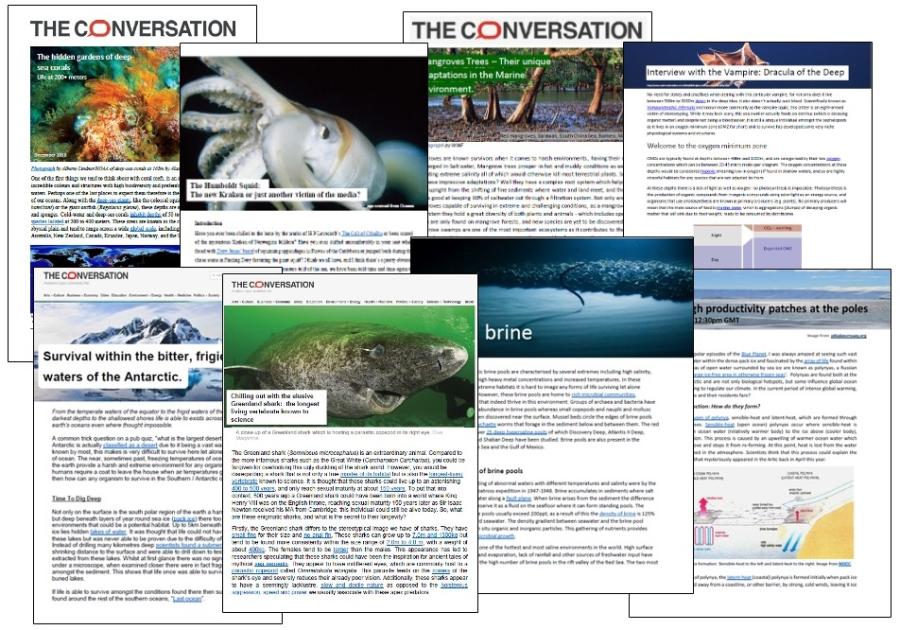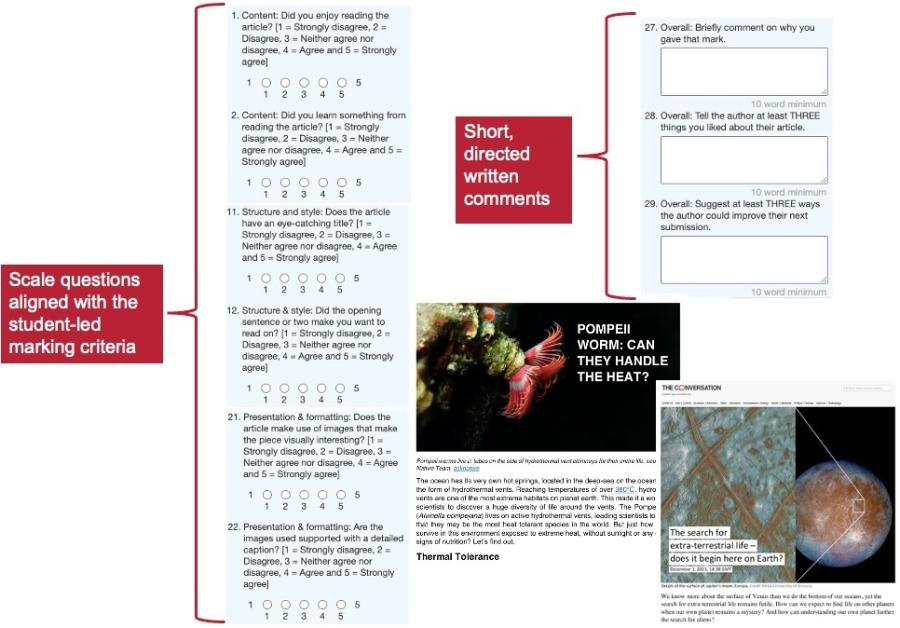What inspired or motivated you to use this tool/resource?
Engaging in peer-to-peer feedback supports students in developing higher-level skills, but finding a suitable assignment scenario and platform is challenging. The assessment described had a peer-review element but lacked structure, leading to inconsistent student experiences and missed learning opportunities. We formalized the peer feedback exercise to ensure all students gave and received several reviews with clear guidance. We discovered the embedded PeerMark facility, which is well-hidden but available for all Turnitin assessments. It integrates with Blackboard and Turnitin, eliminating the need for external platforms. PeerMark keeps work anonymous, distributes submissions automatically, and collates reviews. The dashboard allows us to build clear marking criteria (scale and free response questions) for students to use. It also forces students to complete a self-review, which is crucial to the process.
What was your aim in using this tool/resource?
We aimed to give students the opportunity to read and critique a range of their peers’ submissions to benchmark their own work, to fully get to grips with the marking criteria for the assessment by actively applying them to multiple examples, and to give and receive constructive feedback that could be applied to a final summative submission. Integration of the PeerMark tool achieved these aims.
What did you use the tool/resource for?
We used this tool in a 3rd year module “Extreme Marine Habitats” taken by around 60 Marine Biology students in Semester 1 of each academic year. The associated assessment forms 50% of the 20-credit module (the remaining 50% being an exam). Students write popular science articles in the style of The Conversation, keeping in mind the tag line “academic rigour with journalistic flair”. Students write two articles on topics of their choice that must relate to the module theme, and the first of the two submissions is used for the PeerMark activity. Students undertake and receive five peer reviews and complete a self-review (at the end), and they also receive instructor feedback for this submission. We award a small amount of credit for completing the peer-review process (10%).

How did the tool/resource impact your teaching?
After having participated in the peer and self-review process, students describe having a better understanding of the assessment standards and expectations. Students recognise the value of comparing their work with external sources of information, internalizing the feedback received, and then actively using that feedback to improve their second article submission.
Liked the peer reviewing exercise. I felt like it helped me write a better second article by having to mark my own in detail and other peoples.
… the peer review aspect was extremely helpful in promoting critical thinking of your own work.
I really enjoyed the peer-review aspect of the article assessment. It felt really beneficial to have the opportunity to read other students work and seeing how they approached the same assessment in different ways. It also provided really useful feedback which I can take on board for all future writings in a similar way.
How well did the tool/resource perform, would you recommend it?
The PeerMark tool is integrated into Turnitin's assignment settings. It allows setting peer-review deadlines, specifying the number of reviews, deciding on reviewer anonymity, distributing reviews (e.g., randomly), and requiring self-reviews. The main task is creating a question bank for the peer review process, which can include scale and free response questions based on student-led criteria. These questions can be reordered and saved for future use, making the initial time investment worthwhile.
PeerMark eliminates the need for external platforms, providing a seamless integration with student submissions and a central location for setting up peer-review assignments and designing review questions. But significant scaffolding is needed for the peer-review task. For example, we provide structured guidance and timetabled sessions where we break down the contents of popular science articles, discuss ‘what constitutes good’, and develop an understanding of the marking criteria so students feel confident to peer review. This effort is justified by positive feedback from students and improved performance.

How well was the tool/resource received by students?
Students have been quick to get to grips with using the PeerMark tool and find it easy to navigate their way around the dashboard.
There has been a positive effect on student performance, with the average mark achieved for the second article submission consistently higher than the average mark achieved for the first.
When asked whether feedback throughout the module was helpful in improving their learning, students consistently respond positively, reporting end of module evaluation scores of ~ 90%.
Share a ‘Top Tip’ for a colleague new to the tool/resource
Set up a mock Blackboard site and Turnitin assessment with some submissions (e.g. ask your colleagues if you can enrol them as students) so you can have a full behind-the-scenes look at the set-up before you launch a peer-review activity through PeerMark. This approach is less daunting than starting with a live student-facing site!
Assessment design is crucial. The Conversation articles, with their short and diverse content, are ideal for student peer-review activities. This assessment type engages and informs students and is achievable at the undergraduate level with low risk of academic integrity breaches. Other academic writing assessments may require a more considered approach for student reviews.
Our review process includes a mix of free response and scale questions. We stipulate a minimum word count for free text comments to ensure meaningful feedback and consistency between reviewers.
How would I summarise the experience in 3 words?
Peer review works
Recommended reading:
https://guides.turnitin.com/hc/en-us/sections/23740945874189-PeerMark-assignments
Carless, D. & Boud, D. (2018). The development of student feedback literacy: enabling uptake of feedback. Assessment & Evaluation in Higher Education, 43(8), 1315-1325. https://doi.org/10.1080/02602938.2018.1463354
Evans, C., & Waring, M. (2021). Enhancing students’ assessment feedback skills within higher education. In: Oxford Research Encyclopedia of Education. Oxford University Press. https://doi.org/10.1093/acrefore/9780190264093.013.932
Nicol, D. (2022). Turning active learning into active feedback. Introductory Guide from Active Feedback Toolkit, Adam Smith Business School, University of Glasgow. doi: 10.25416/NTR.19929290
Nicol, D. & MacFarlane, D. (2006). Formative assessment and self-regulated learning: a model and seven principles of good feedback practice. Studies in Higher Education, 31(2), 199-218. https://doi.org/10.1080/03075070600572090
Contact for more information:
Dr Laura Grange l.grange@bangor.ac.uk
Dr Sarah Zylinski s.zylinski@bangor.ac.uk
